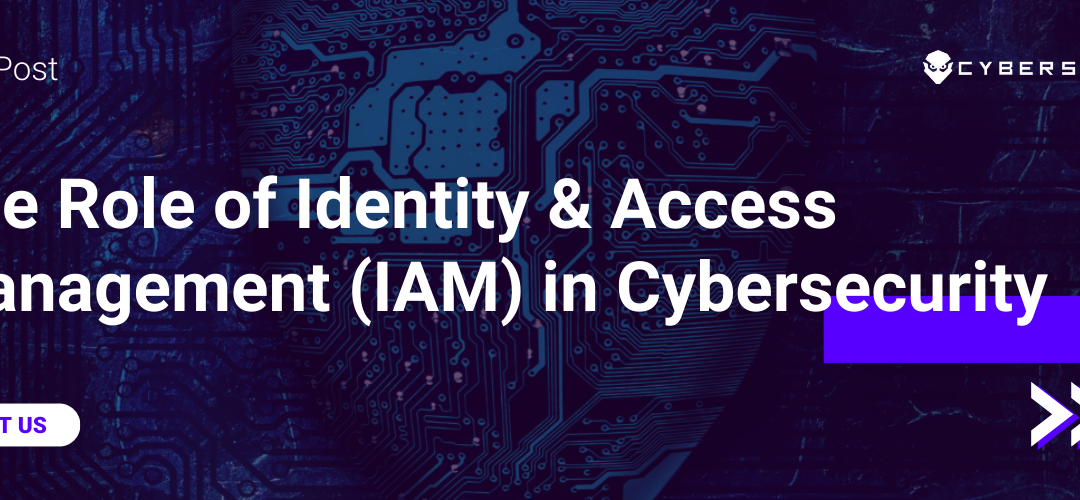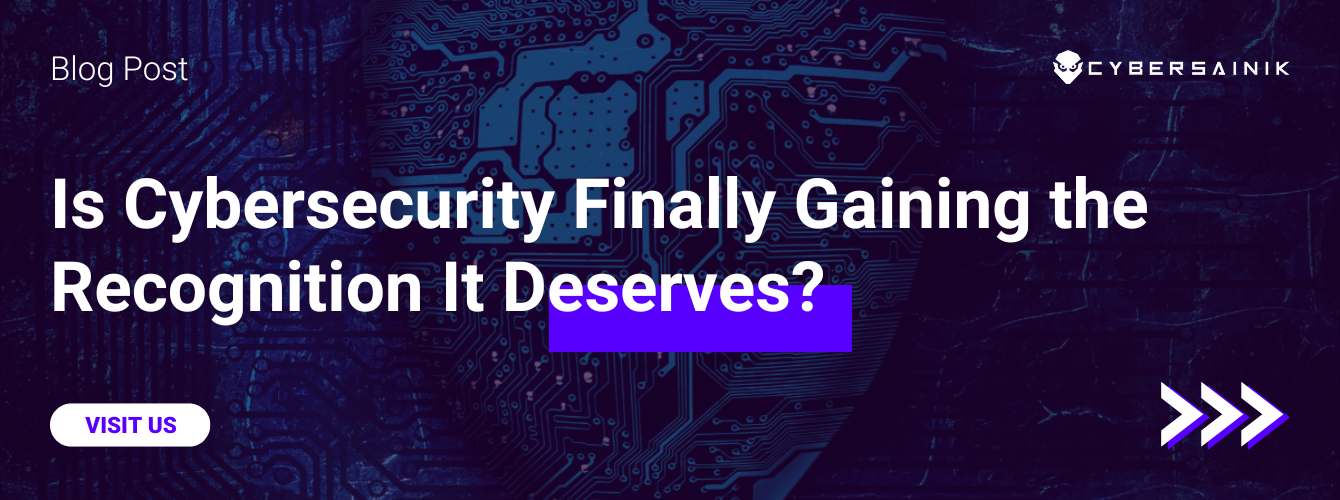In this tech-savvy era, everybody operates online. From individuals and businesses to non-profit organizations, many companies have their confidential and critical corporate data stored on digital platforms. That only makes them susceptible to malicious online activities from hackers who target companies’ computer systems to phish data for illegal and malicious practices, such as malware, man-in-the-middle (MITM), password attacks, etc. It’s high time organizations deploy identity and access management (IAM) as part of their cybersecurity strategies to better protect their data.
Cyber-attacks like ransomware are not novel incidents. CNN reported a worsening situation in the cybersecurity space as the number of hackers targeting sensitive business information and data for ill motives. With remote working becoming a norm, significant vulnerabilities and loopholes in cybersecurity have been exposed, providing more avenues for hackers to orchestrate their attacks.
The Business News Daily discovered that most companies that report these breaches have poorly secured accounts. Among the 1,000 IT leaders sampled in the study, 74% of the respondents from companies whose computer systems had been breached said that the attacks stemmed from breached privileged accounts.
Work-from-home policies only mean that employees have increased access to sensitive company information; enough reason for them (businesses) to have tighter access control. Identity and access management (IAM) allows IT professionals to have increased control over who can access confidential and valuable business data and at what time.
What is Identity and Access Management (IAM)?
“Identity and Access Management” is an umbrella term that describes processes, frameworks, and technologies used to manage digital identities and regulate user access to sensitive accounts and information within a company’s IT infrastructure. IAM also encompasses the vetting technologies that define situations warranting user access to restricted business data.
IAM Extends Cybersecurity Beyond the Office
For remote workers to perform their professional duties, they need access to corporate resources. While most businesses have already deployed robust cybersecurity systems in their work premises, there has been a significant shift towards IAM because it facilitates the extension of data security from the office to personal spheres, whether at home or other remote locations.
Cyberattacks are on the rise. Organizations today hire third-party cybersecurity agencies to safeguard their personal identity and monitor employees’ personal data to identify weaknesses and suspicious activities. While that’s commonplace in many physical office settings, it’s the first time the concept is being introduced to remote workplaces, and the idea that individual employees require cybersecurity measures to protect their digital assets is only gaining traction.
What are the Benefits of IAM?
There’s no denying that IAM tools help companies bolster their digital security, bringing efficiency due to reduced cyberthreat-induced downtimes. Still, IAM offers several benefits to companies. They include:
1) Reduced Security Costs
An IAM tool standardizes and streamlines all identification, authentication, and authorization protocols in risk management. Using a federated identity management platform means IT professionals need not rely on local identification systems for remote or external use. That makes IAM application easier and less costly. Besides, cloud-based IAM solutions alleviate the costs of investing in and maintaining in-house hardware.
2) Improved Data Security
With IAM, companies can access and integrate identification and authorization functions on a single platform. It gives IT professionals complete control of the identity management codes and enables them to establish consistency in methods used to control user access based on the company’s identity cycle.
For instance, if an employee had access to confidential business accounts, IT administrators can leverage IAM to delete the former employee’s accounts and revoke any subsequent attempts to access the company information. They can block access across all business-critical systems with a single click of a button.
3) Least Privilege Principle
The least privilege principle is a concept in cybersecurity management that narrows down access privileges to the bare minimum. Thus, employees can access only the information they require to do their jobs, nothing more. Seventy-seven percent of data breaches result from internal vulnerabilities. Therefore, companies must control access to corporate resources.
When an employee switches a role and assumes a new position in another department or office, they’ll have access to multiple business accounts. With time, their access privileges accumulate. The employee then becomes the target of cybercriminals who’ll use them as a gateway to the broader company information. In that case, the IT department can leverage IAM to revoke their access to data accounts that don’t relate to their current position. That significantly reduces exposure to cyberattacks.
4) Enterprise IT Governance
The cybersecurity space is a regulated industry. Regulations outlined in the Health Insurance Portability and Accountability Act (HIPAA) and the 2002 Sarbanes-Oxley Act (SOX), only remind us how important IAM is for companies to remain compliant with industry policies and rules.
In March 2017, the New York Department of Financial Services (NYDFS) announced new rules that impacted financial institutions’ operations regarding their cybersecurity strategies. Banks are now required to manage audits and monitor the activities of individuals who have access to computer systems. These are functions that an IAM solution can efficiently perform.
Furthermore, the identity management platform enables a company to enforce various access policies like separation-of-duty SoD. Automated IAM tools also enable IT leaders to maintain consistency in their identity management techniques to ensure governance control and minimal access violations through automation.
How IAM Boosts Security?
The primary purpose of integrating IAM into your IT infrastructure is to streamline the identification, authentication, and authorization processes by assigning each authorized individual a personal digital identity and password. The role of the IAM is to maintain and track users’ activities based on their access levels during their access lifecycles. IAM bolsters cybersecurity in several ways:
1) Role-based Access Control
IAM plays a critical in improving cybersecurity by enabling IT departments to restrict access to business accounts based on a user’s role in the company. Typically, each employee undertakes their job based on their job description, position, and responsibility within the company. With IAM, it’s easier to offer employees access only to accounts that pertain to their roles.
2) Human and Device Identification
Apart from providing humans with digital identities, IMA can also assign identification to devices and applications. By linking employees’ digital accounts to their devices, the IT department can verify the user’s identity and ensure they only have access to the corporate resources they are entitled.
3) Automatic De-provisioning
As mentioned above, an IMA can protect a company’s critical information when an employee leaves the organization. Data theft by ex-employees is not uncommon, especially when the employee parted ways with their employer on bad terms.
De-provisioning access privileges manually can take a lifetime, not to mention that remembering all their login credentials to various applications is virtually impossible. Vulnerabilities can easily pop up at different facets of a company’s computer network when doing that manually, and these are weaknesses that cyber attackers are looking for. With an automated de-provisioning process, you can deny access to an ex-employee’s attempt to access their previous accounts and easily manage employees’ identities as they switch roles within the company.
How Cyber Sainik Can Help with IAM
If you’re questioning the security of your IT infrastructure, it’s time you trust your gut that there’s a vulnerability. You can improve your IT network’s security by partnering with Cyber Sainik. We are a client-focused, Managed Security Services Provider (MSSP). We render a range of services to help you improve your cybersecurity practices. These services include:
- Identity management
- Intrusion detection and prevention
- Vulnerability protection
- Device security
- Security information and event management (SIEM)
With Cyber Sainik, you have access to the tools and resources to implement IAM and multi-leveled authentication protocols that help you create robust security policies. Additionally, our IAM solutions are designed to ensure that only the right user can access corporate accounts at the right time, thus protecting your data against external and internal security breaches.
IMA implementation is not an option. It’s imperative. If you are ready to integrate IAM into your cybersecurity systems, contact us today to get IMA services that strongly protect your business data.




